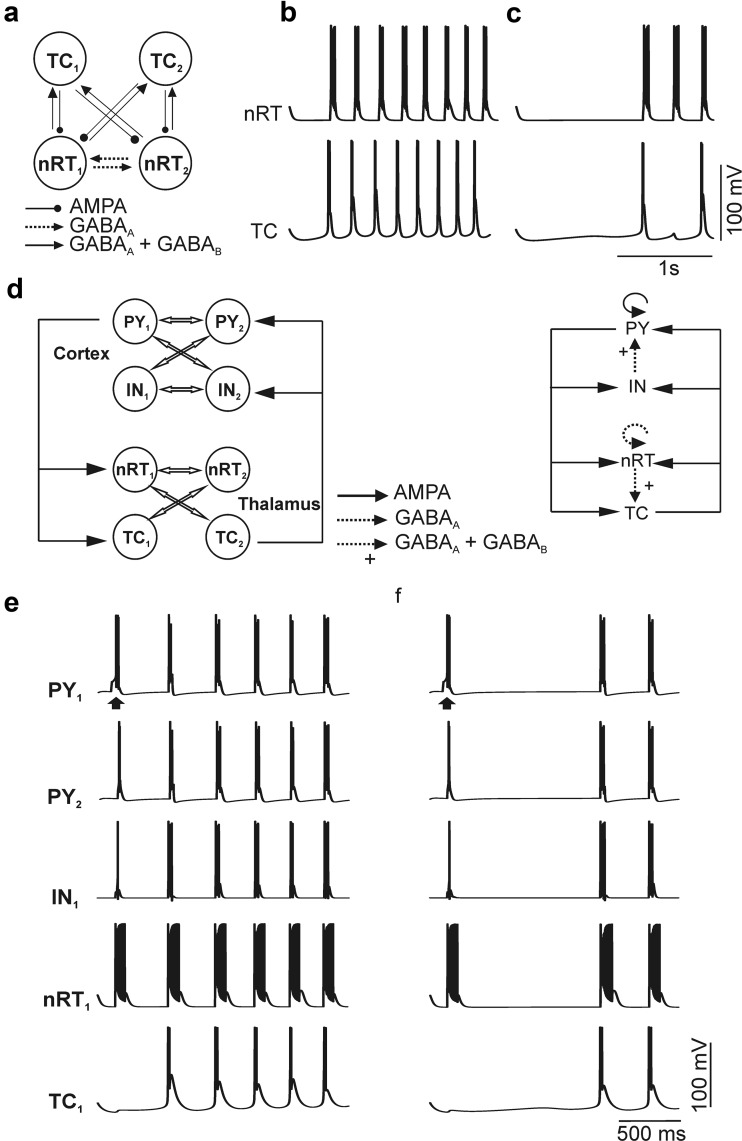Fig. 9.
Mathematical modeling of intrathalamic and corticothalamic network activity. a The network topology as well as the connection parameters corresponds to Destexhe (Destexhe et al. 1996). In this 4-cell model nRT (reticular thalamic neurons) neurons reciprocally communicate via GABAA-mediated connections and project to both TC neurons via GABAA and GABAB signaling. The feedback from TC cells is carried by AMPA receptors to both nRT cells. Since both thalamic relay neurons (TC) as well as both reticular thalamic neurons (nRT) show identical results, only one of each cell type is presented here. At − 70 mV, with I h parameters set to the actual values obtained from VB TC cells of WT and TRIP8b−/− mice, the frequency of burst activity (Hz) in the absence of TRIP8b (c) is significantly slower compared to WT (b) conditions (Student’s t test, p < 0.05). d The network topology as well as the connection parameters correspond to Destexhe (Destexhe et al. 1998). Four cell types were used in this simulation. PY, IN, TC and nRT stand for cortical pyramidal neuron, cortical interneurons, thalamocortical cells and reticular thalamic neurons, respectively. e Oscillations were initiated by electrical stimulation of one pyramidal neuron (PY1) indicated by arrows. Actual I h parameters obtained from PY and TC neurons of WT (e) and TRIP8b−/− (f) mice under voltage-clamp conditions were used for the simulation. At − 70 mV, oscillations occurred at a slower frequency range in TRIP8b−/− compared to WT conditions (Student’s t test, p < 0.05)

